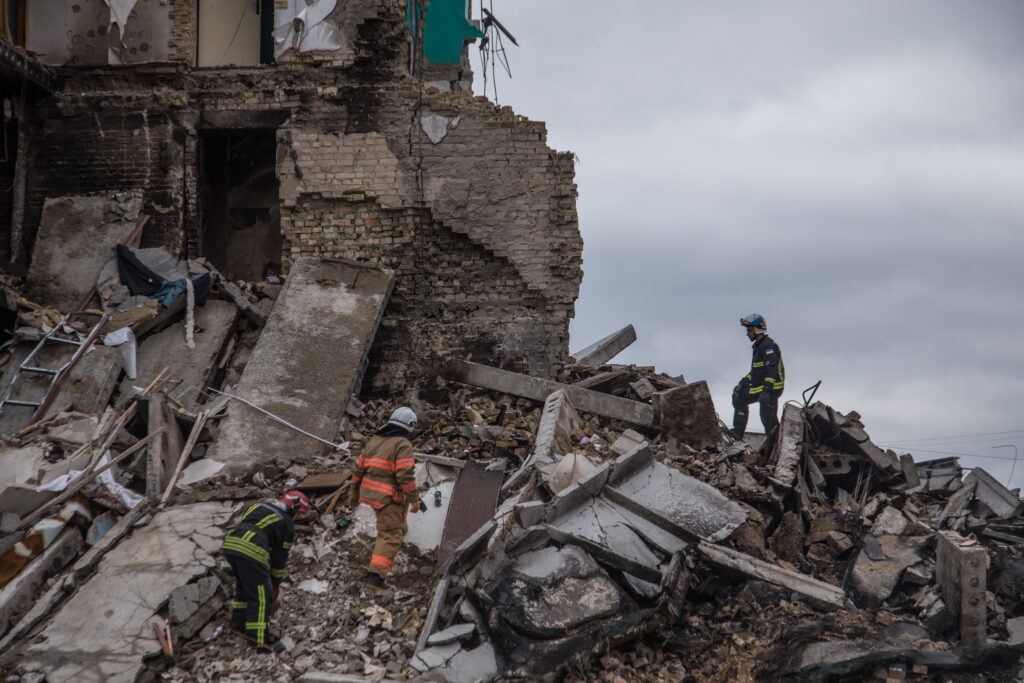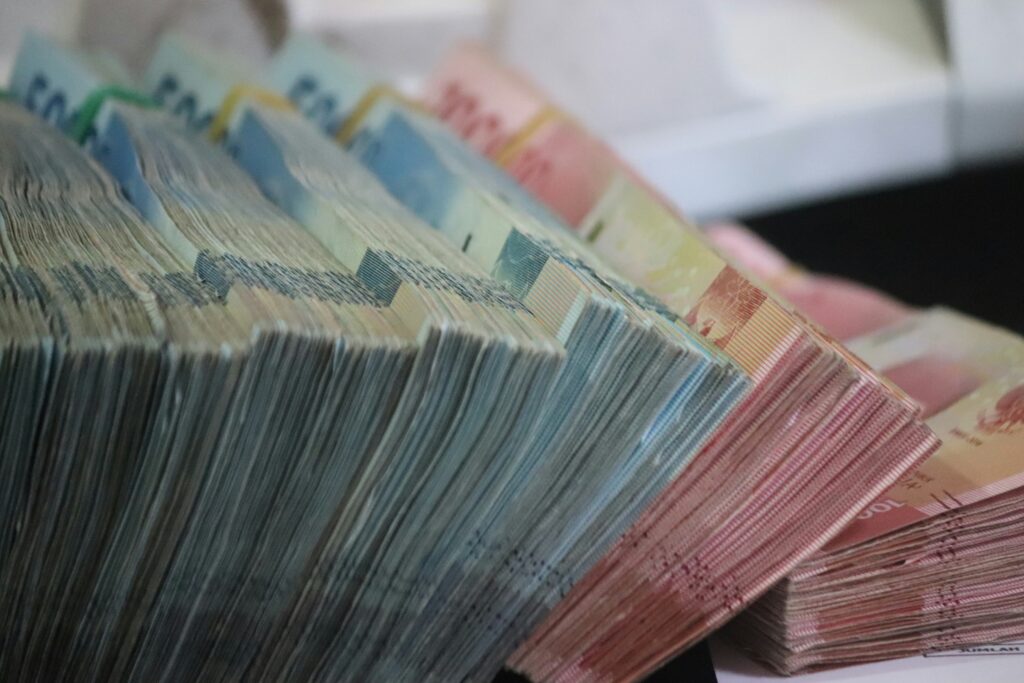Amidst the third year of the ongoing Ukraine-Russia conflict, the international community is grappling with how to effectively support Ukraine’s war economy and recovery. Recent actions, such as the EU’s 13th package of sanctions against Russia, highlight the sustained efforts by western powers to support Ukraine following Russia’s invasion.. Among the most significant consequences of the previous sanctions has been freezing approximately €300 billion of Russian foreign reserves. The European Commission, EU Member States, and the G7 have explored the potential of repurposing these frozen assets to aid Ukraine’s post-war reconstruction.
The scale
The scale of Ukraine’s post-war reconstruction needs is staggering, with the World Bank estimating the total cost to be around $411 billion from the period 2022-23 alone. This figure encompasses not only the direct damage incurred, estimated at $152 billion, but also the necessary rebuilding of key infrastructure such as housing, roads, railways, and power plants.
However, the devastation wrought by the prolonged conflict extends beyond these primary sectors, inflicting additional damage on a wide array of essential services. From forestry to irrigation, water supply to sanitation, and municipal services to emergency responses, the war’s impact reverberates throughout every facet of Ukrainian life. Furthermore, sectors crucial to the nation’s economy, including commerce, industry, culture, and tourism, have suffered significant setbacks, exacerbating the challenges of recovery.

The recently agreed EU Ukraine Facility has committed €50 billion to the reconstruction of Ukraine. A similar US package remains mired in the Congress, with funds unlikely to be released before the presidential election in November. As a result, there is growing pressure to meet Ukraine’s immense funding needs by different means. Amidst this background, G7 states are considering mobilizing Russian assets that were frozen as part of the initial rounds of sanctions in the spring of 2022. These assets include bank deposits, real estate, and financial investments. The frozen assets accumulated since 2022 totaled €300 billion. These assets are predominantly held in Euroclear, a Belgium-based financial services company that deals in cross-border securities and funds. Since 2022, they have generated substantial earnings, estimated at over €4 billion per year, according to Euroclear. Given their size, the frozen assets represent a significant resource that may be used to bolster Ukraine’s reconstruction efforts.
The path
The Council of the EU has set a clear framework for the utilisation of frozen Russian assets held by central securities depositories (CSDs) like Euroclear. CSDs are now mandated to segregate revenues from these assets into a separate account, refraining from utilising net profits until a unanimous decision among EU member states establishes a mechanism for their allocation. To utilise these funds for Ukraine’s reconstruction, the European Commission would have to propose new legislation establishing such a mechanism. One idea is that the funds are first transferred to the EU budget, subsequently earmarked for Ukraine.
Complicating matters further are the political dynamics within the EU, as previous attempts by member states to provide financial assistance to Ukraine have faced resistance, notably from Hungary. Hungary’s repeated vetoes of funding initiatives underscore the delicate balancing act required to garner unanimous support for aid packages.

The risks
The prospect of unlocking frozen Russian assets for Ukraine’s reconstruction is not without its risks and potential repercussions. Foremost among these concerns is Russia’s warning to engage in severe retaliatory measures from Russia, potentially including the confiscation of EU and G7 member states’ assets within its borders. Reports suggest that these assets amount to a similarly staggering $288 billion, underscoring the magnitude of potential economic fallout.
Already, Russian lenders have initiated legal proceedings against Euroclear in a bid to access the assets currently held in custody. This legal entanglement adds a layer of complexity to the situation, further complicating efforts to repurpose these funds for Ukraine’s benefit. Moreover, the broader implications extend beyond the realm of geopolitics, with potential ripple effects on financial markets. Concerns abound that investors may lose confidence in the Euro, fearing that their funds could be subject to seizure in the future.

A particular concern is the geopolitical and legal landscape surrounding the utilisation of frozen assets. Such actions are unprecedented and would constitute a significant departure from established norms. Their legality is also questioned by EU institutions themselves, including the European Central Bank. This uncertainty underscores the high-stakes involved, and the need for careful deliberation and strategic foresight in charting a course forward.
Implications for Governments
- Legal and financial risks: EU officials consider seizing Russian assets legally risky, with concerns about potential repercussions on financial markets. Confiscating these assets could have implications for the euro currency, as investors might withdraw from euro assets fearing similar seizures. In turn, there may be an impact on global financial markets and investment strategies. Concerns exist about the outflow of investment in Euros and its consequences on borrowing costs, inflation, and tax revenues.
- Assessing national accounts: Governments may seek to conduct comprehensive assessments of their exposure to Russian assets held by individual, national central securities depositories. Understanding the extent of these holdings and their associated revenues is crucial for determining the potential contribution to a budget dedicated to Ukraine’s reconstruction efforts.
- Coupling policies: In crafting future reconstruction strategies, governments could intertwine the efforts to end the ongoing conflict with initiatives aimed at facilitating reconstruction. This is likely to entail the rebuilding of devastated infrastructure and communities in Ukraine with actions to support through further military aid and diplomatic efforts.
Implications for private firms
- EU financial sector: The freezing of Russian assets, particularly central bank reserves, has implications for financial institutions that may have exposure to these assets. Any decision to use these frozen assets could affect the stability of financial markets and investor confidence within the EU.
- Financial market volatility: The potential utilization of frozen Russian assets could lead to increased volatility in global financial markets, impacting businesses with international investments or operations. Uncertainty surrounding the fate of these assets may influence investment decisions and market dynamics.
- Risk management: Businesses need to assess and manage risks associated with potential retaliatory actions from Russia in response to any decision regarding frozen assets. This includes evaluating exposure to Russian markets, considering currency fluctuations, and preparing for possible disruptions in international trade.
- Business opportunities: More generally, reconstruction efforts in Ukraine offer prospects for firms in construction, development, and related sectors. Companies can capitalize on the demand for construction materials and expertise to support the rebuilding process. Additionally, there are opportunities for innovative solutions and technologies to address reconstruction challenges, fostering economic growth and job creation in the region.

